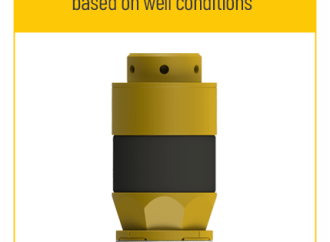Introduction In the ever-evolving world of compliance, financial institutions, telecom providers, and regulated enterprises face constant pressure to detect and report suspicious entities without delay. AML Software is the central tool in this battle—working to identify risky customers, analyze transactions, and screen against sanctions lists. But even with the best technology, one major challenge persists:
Introduction
In the ever-evolving world of compliance, financial institutions, telecom providers, and regulated enterprises face constant pressure to detect and report suspicious entities without delay. AML Software is the central tool in this battle—working to identify risky customers, analyze transactions, and screen against sanctions lists. But even with the best technology, one major challenge persists: false positives in sanctions screening.
False positives not only waste time and resources but also delay legitimate customer transactions and increase friction. This is where the power of Deduplication Software steps in. By identifying and merging duplicate records, deduplication ensures that screening systems analyze clean, consolidated profiles—dramatically reducing the chances of incorrectly flagging customers.
When combined with Sanctions Screening Software, smart deduplication transforms compliance accuracy, improving both efficiency and customer experience.
Understanding False Positives in AML Programs
False positives occur when a compliance system wrongly identifies a customer or transaction as suspicious or linked to a sanctioned individual. This can happen due to:
- Slight variations in names (e.g., “Mohammad” vs. “Muhammad”)
- Typographical errors in records
- Multiple customer entries with incomplete or outdated information
- Lack of real-time data cleaning and matching
While it’s crucial to err on the side of caution, excessive false positives can cripple operations, leading to delays, unnecessary investigations, and audit fatigue.
How AML Software Supports Sanctions Compliance
AML Software serves as the digital backbone of anti-money laundering efforts. It automatically monitors transactions, flags suspicious activities, and screens entities against global watchlists such as OFAC, UN, and EU sanctions. With real-time capabilities, these platforms offer proactive risk management.
But the accuracy of an AML system depends entirely on the quality of the underlying data. If your customer database is full of duplicates, spelling errors, and inconsistencies, even the most advanced software will struggle.
The Role of Sanctions Screening Software
Sanctions Screening Software is a specialized layer within AML systems that focuses solely on detecting whether a person, company, or entity appears on any restricted or blacklisted database. These tools use algorithms to perform fuzzy matching, account for aliases, and flag similar-looking entries for review.
However, even with fuzzy logic, too many near-matches from poorly maintained data lead to false alerts. For instance, if a customer exists under three slightly different names across systems, the software might generate three separate alerts—tripling the workload for no real reason.
Deduplication Software: A Game Changer
Deduplication Software addresses this core issue by scanning datasets and identifying records that refer to the same individual or entity. These tools do more than just match exact names—they analyze multiple fields (name, address, date of birth, ID number) to intelligently group related records, even with typos or missing values.
Once duplicates are resolved, the AML system can operate with a single, clean customer profile. This reduces false positives by eliminating redundant and conflicting data.
How Deduplication Works in Practice
Let’s say your system has three profiles for the same customer:
- John P. Smith, DOB: 01/01/1980
- J. Smith, 1980-01-01, missing address
- Jonathan Smith, 1 Jan 80, different ID
Each record on its own might trigger separate alerts when screened against a global watchlist. But with Deduplication Software, all three profiles are merged into one. When screening occurs, there’s only one match to check—drastically lowering the alert volume and increasing precision.
Boosting Accuracy with Data Cleaning Software
Data Cleaning Software ensures that the data entering your system is accurate, complete, and standardized. Before deduplication can even begin, you need clean data—free from extra spaces, formatting inconsistencies, or outdated entries. This foundational step is often overlooked, but it’s critical to reducing false matches.
For example, “123 Street Road” and “123 St. Rd.” may be treated as different addresses unless standardized. Cleaning tools harmonize such differences, setting the stage for more effective deduplication and screening.
Going Deeper with Data Scrubbing Software
In addition to cleaning, Data Scrubbing Software helps remove redundant, irrelevant, or expired data. During system migrations, for instance, it ensures that only active and useful records are retained. Scrubbing clears out clutter, reduces processing time, and eliminates “dead weight” that can confuse AML systems.
When you combine data scrubbing with smart deduplication, the result is a lean, reliable database ready for accurate sanctions screening.
The Benefits of Smart Deduplication in AML
- Reduced Alert Volume: One deduplicated profile = fewer redundant matches and alerts.
- Faster Investigations: Analysts no longer chase false trails or duplicate alerts.
- Higher Accuracy: Clean, consolidated data ensures better fuzzy matching results.
- Improved Customer Experience: Legitimate customers don’t get caught up in false red flags.
- Audit-Readiness: A clear, unified customer view makes documentation easier during regulatory audits.
Real-World Impact: A Telecom Case
A telecom company using multiple platforms for KYC and billing faced excessive false positives. Their AML screening system flagged hundreds of customers daily—most of whom were legitimate. By implementing IxSight’s deduplication engine, they reduced duplicate records by 65% in the first quarter and saw a 40% drop in false positives in sanctions alerts.
This saved countless analyst hours and improved onboarding time for new customers.
A Unified Approach for Future-Ready Compliance
Today’s compliance leaders know that AML isn’t just about monitoring transactions—it’s about managing data intelligently. An end-to-end solution that brings together:
- AML Software
- Sanctions Screening Software
- Deduplication Software
- Data Cleaning Software
- Data Scrubbing Software
…can completely transform how organizations handle compliance.
With streamlined records, smarter matching, and automated workflows, businesses can reduce risks, stay ahead of regulators, and improve operational agility.
Final Thoughts
False positives don’t just cost money—they cost time, trust, and compliance reputation. But with the right tools in place, especially smart Deduplication Software combined with robust AML Software, you can slash these false alarms and sharpen your sanctions screening performance.
In a world of rising regulation and growing customer data, smarter deduplication isn’t optional—it’s essential.
Frequently Asked Questions (FAQ)
Q1. What causes false positives in sanctions screening?
False positives occur when a customer or transaction is mistakenly flagged as suspicious. This often results from poor data quality, duplicate records, or close matches to names on watchlists. Without proper data cleaning and deduplication, even small discrepancies can trigger unnecessary alerts.
Q2. How does deduplication reduce false positives?
Deduplication software identifies and merges duplicate records that represent the same individual or entity. This process helps create a single, clean customer profile, reducing the number of redundant or conflicting entries that often lead to false sanctions alerts.
Q3. Can deduplication software work with existing AML systems?
Yes, most modern deduplication tools are designed to integrate seamlessly with existing AML software and compliance workflows. When integrated, they enhance data quality upstream so that the screening and monitoring tools produce more accurate results downstream.
Q4. What is the difference between data cleaning and data scrubbing?
Data cleaning software standardizes and corrects data errors like formatting issues or missing fields. Data scrubbing software, on the other hand, removes obsolete, irrelevant, or duplicate data that no longer serves a purpose. Both are essential for high-quality AML data governance.
Q5. Is deduplication only useful for financial institutions?
Not at all. While financial institutions use deduplication heavily for KYC and AML, industries like telecom, insurance, healthcare, and government also benefit from clean, unified customer records to improve compliance and reduce operational inefficiencies.
Q6. How often should deduplication be performed?
Ideally, deduplication should be done continuously or in real time, especially in high-volume environments. Batch processing may be suitable for smaller organizations, but real-time deduplication provides faster and more accurate compliance screening.
Q7. Can deduplication handle fuzzy matches like similar names or misspellings?
Yes. Advanced deduplication software uses fuzzy matching algorithms to identify records that are not identical but likely refer to the same person or entity. These include variations in spelling, missing characters, or different formats for names and addresses.






















